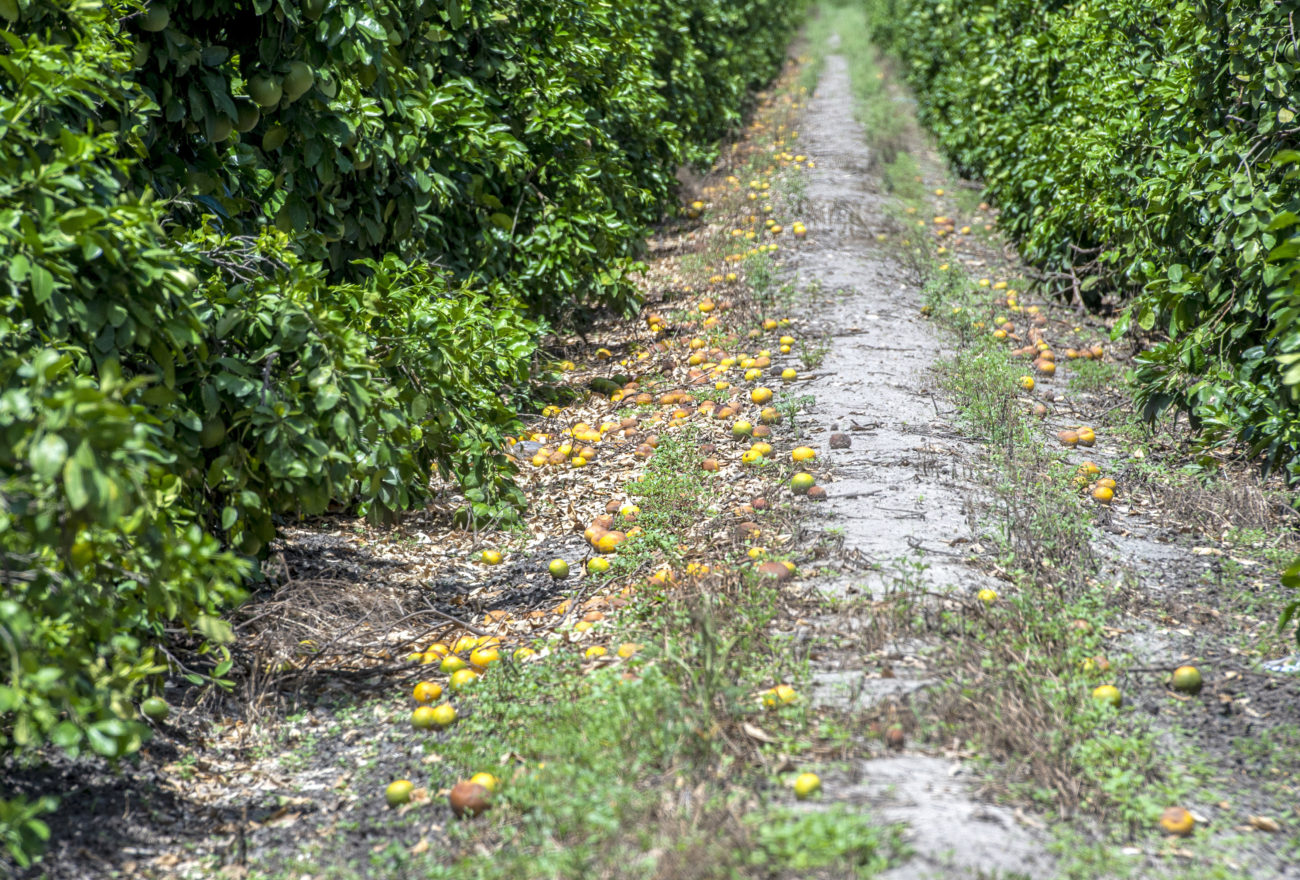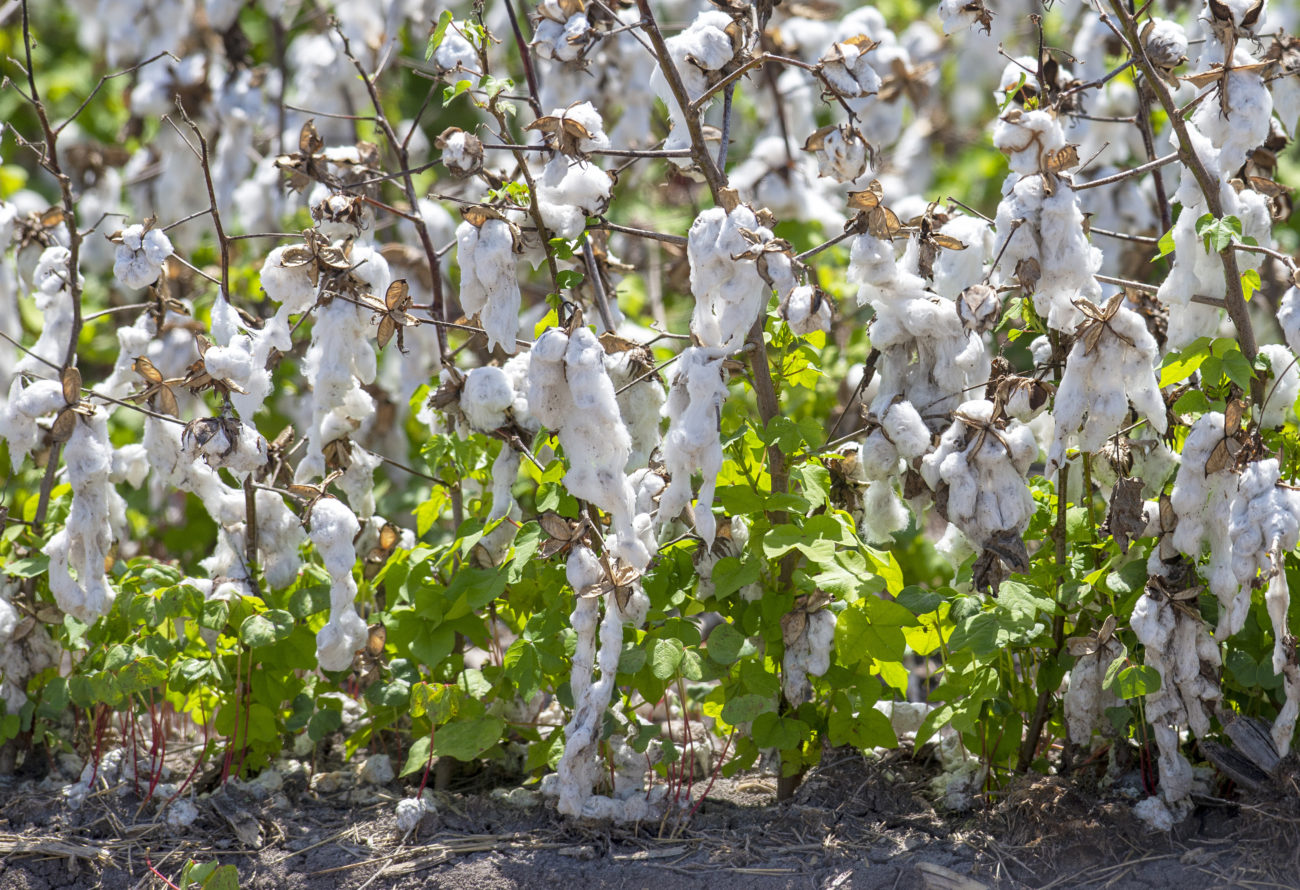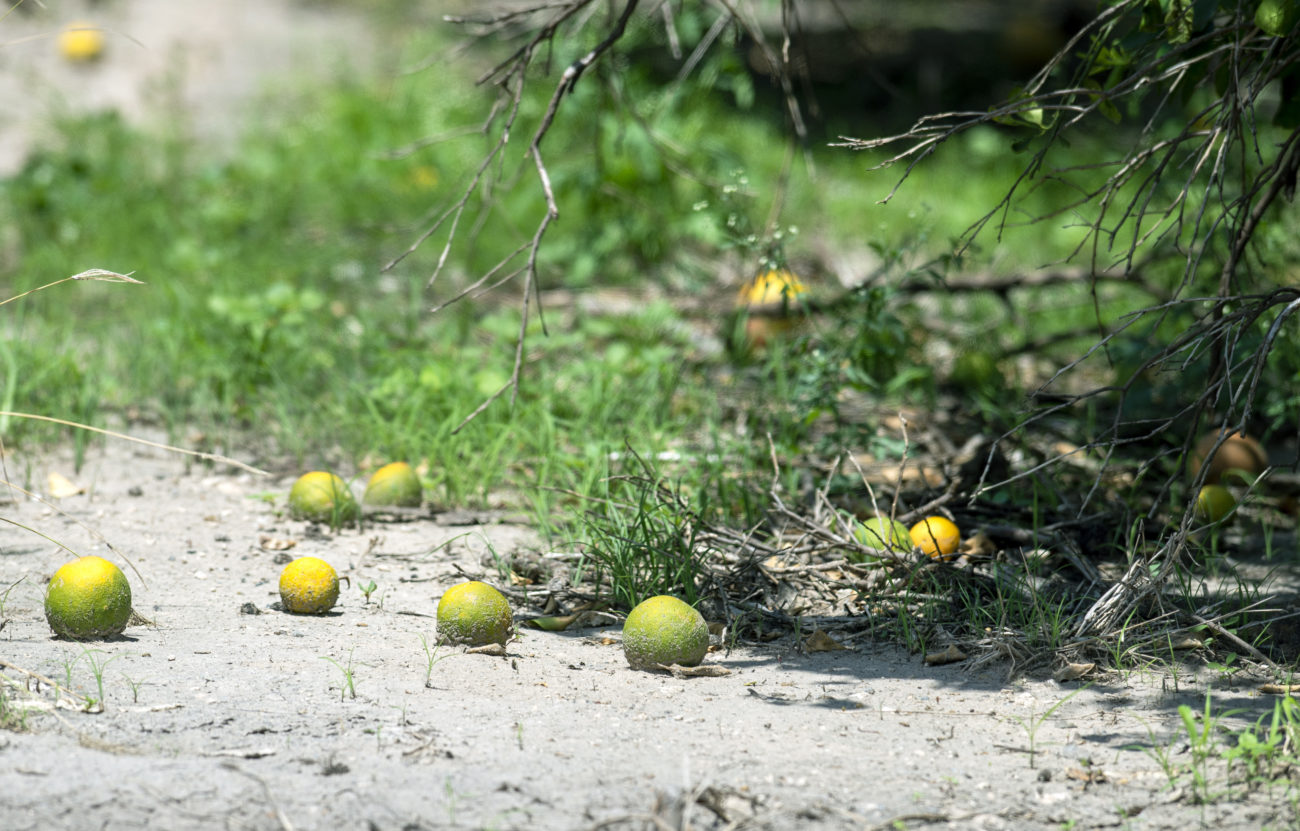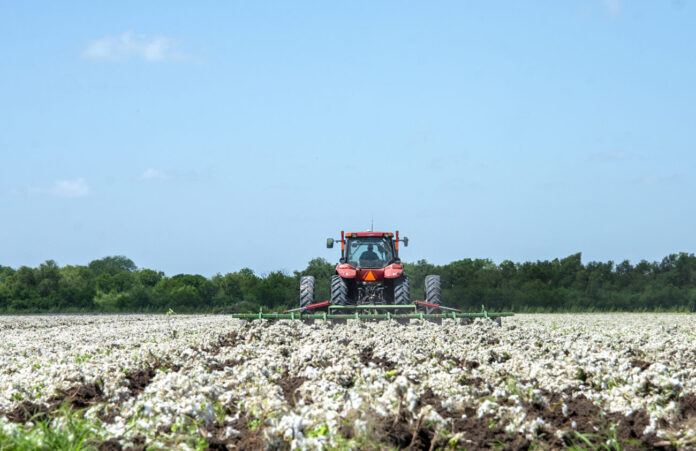HARLINGEN — A growing season that began with searing drought had farmers worrying about adequate irrigation.
It’s ending on quite another note.
Too much wind and water delivered to the Rio Grande Valley by Hurricane Hanna has led to disastrous consequences for cotton and citrus crops.
“It’s not good, specifically for the cotton crop,” said Mario Ponce, AgriLife extension agent for Cameron County. “In talking to some USDA personnel, who are interacting with different producers, the estimation I’ve heard is about a 90-percent or above loss for the cotton crop in Cameron County.”
Mike England is owner of England Farms in Mercedes. Earlier this year, he made history by producing the Valley’s first two bales of cotton for 2020, hauling it to the Ross Gin Co. on June 18.
The rest of his cotton isn’t going to make the trip.
“Lost every acre of it,” he said. “I picked a little 54-acre dryland spot, that’s all I had that was really ready, the day before the thing hit. After that, all my good cotton’s all gone.”
Wind-dropped fruit
Citrus groves also were heavily damaged by high winds and rainfall between six and 18 inches in some areas, with winds blowing past the 60-mph mark.
Fred Karle is owner of Karle Farms based in McAllen, but he has around 40 citrus groves up and down the Valley.
Damage to grapefruit knocked to the ground by high winds was significant, he said, and to a lesser degree, oranges.
“Well, we’re saying in Cameron County, probably a 25 to 50 percent loss on our grapefruit,” he said. “I heard some people say as high as 90, and I haven’t seen that, but out north of Santa Rosa and out north of Rio Hondo we had some pretty big losses on the grapefruit.
“The oranges are maybe 10 percent, or 10 to 15 percent, so far,” he added. “The catch is that even though the fruit didn’t turn loose during the storm it weakens that calyx, that area that holds the abscission layer between the fruit and the stem, it makes it so you can pick it easy. That can be weakened and over time it just turns loose. We haven’t seen the full damage yet.”
Once the fruit is off the tree and on the ground, it’s worth nothing.

Corn, sorghum survive
The good news is that almost all the acreage in the Valley in grain sorghum and corn was already harvested before Hanna shouldered her way through with her rainy gift.
“The sorghum was pretty much harvested,” Ponce said. “That’s our only positive. And the same thing with corn, which is the other big crop in terms of acreage in the county.
“Those producers who had grain sorghum and corn pretty much had everything out of the field,” he added. “Sugar cane was damaged just from the wind. Sugar cane is a tall plant and can catch a lot of wind, and some will be leaning” with top sections broken off.
The county also has around a thousand acres of sesame, harvested for its tiny but flavorful seeds. It’s a relatively recent addition to row crops for Valley growers, but there were reports of significant wind damage to those fields, too, Ponce said.

Cotton’s weak spot
So why is cotton particularly vulnerable to heavy rain?
Ponce says it depends on when the rain hits during the growing season. Cotton is planted in March and most Valley cotton is picked in August, since fields by law have to be disked under by Sept. 1 to fight the boll weevil.
But after the bolls on the cotton plant break open, it becomes particularly vulnerable to a breakdown in the quality of the fibers when drenched.
“We’ve had severe flooding the last two Junes that has hurt crops in terms of flooding, not the wind, but flooding,” Ponce said. “Certainly, fields that drain well, farmers have them in a good area that will drain, they’ll be OK. Especially in June, the cotton bolls are not open yet, so it’s not going to hurt the quality of the cotton. The only danger is root rot from standing water.”
“The thing is, this cotton had open boles already, so the cotton is already exposed and when it gets rained on like that, the quality of the cotton goes down significantly,” he added. “Even if it’s harvestable, the price of the cotton is going to be diminished because of the rain we got.”

Citrus questions
Karle says the true extent of damages to the Valley’s grapefruit and oranges probably won’t be known for some time.
Like cotton, citrus has a long growing season, with trees blossoming in March and fruit reaching picking ripeness anywhere from December until the next spring.
That provides a long window during which an awful lot can go wrong.
“The other loss that’s really severe on grapefruit is sales are based on quality and appearance,” Karle said. “Even though it doesn’t make any difference to eating quality, people like for it to look pretty when they’re looking for it in the store.
“So there’s still that loss that we’re not able to calculate until they run it though the packing shed and you see how many get thrown out for either being degraded or having to go to byproducts, which don’t net any money for a grower,” he added. “Sometimes, they actually cost the grower money.”
Karle said Hanna’s rains have put a cap on a bad run for Valley citrus growers.
“We’re always optimistic, and you might hope, and it may be just hoping and wishing, that the reduction in quantity might mean a lower supply which sometimes has a positive influence on pricing,” he said. “But we’ve just gone through one of the worst years I’ve ever had based on the market and what we’ve gotten out of our fruit.
“We’ve lost money big-time on our grapefruit and are just really breaking even on our oranges,” he added. “We’ve already had a disaster on marketing. So now we’re facing another year with lower volume and maybe poor quality. It’s not a pretty picture, really.”

Plea for help
Valley growers have crop insurance, but they say losses like they suffered due to Hurricane Hanna will not make up the difference, far from it.
“About all we have to rely on at this point is crop insurance, but that’s the only form of insurance I buy that I never feel like I’m covered,” England said.
Karle agreed.
“The insurance is not going to cover it because the deductible is not high enough, or the deductible is not low enough,” he said. “So we probably wouldn’t get much of anything out of the crop insurance on a 25-percent loss, even though that would be way more than our profit the way things are going this year.”
Hidalgo County Judge Richard Cortez has declared his county an economic disaster area due to damage caused by Hurricane Hanna.
But U.S. Department of Agriculture officials are yet to be convinced, although with enough political pressure, that could change, England said.
“We’re trying to get (Gov. Greg) Abbott and all the way up to the secretary of agriculture all the way up the line, and a lot of them have already been down here,” he said. “We’re trying to get them all involved to see if we can’t get some kind of assistance, somehow.”
But even with federal help, there’s no guarantee Valley farmers can pull through the third weather disaster in three years, after major floods in June 2018 and 2019, and now Hanna this year.
“Here’s the real deal,” England said. “This makes three in a row. That ain’t no business can stand that, no business can stand that.
“The declaration is important, but I’ll tell you historically what they want to do is give us an opportunity for a low-interest loan,” he added. “The problem is, hell, I can’t afford to pay the other loans much less another loan.”





